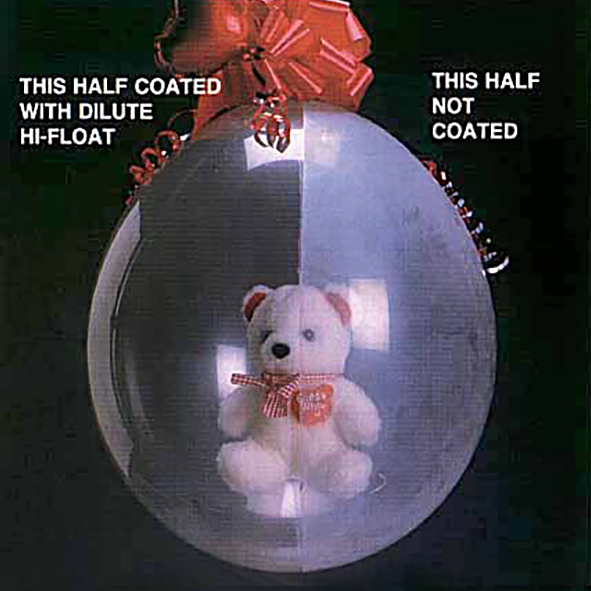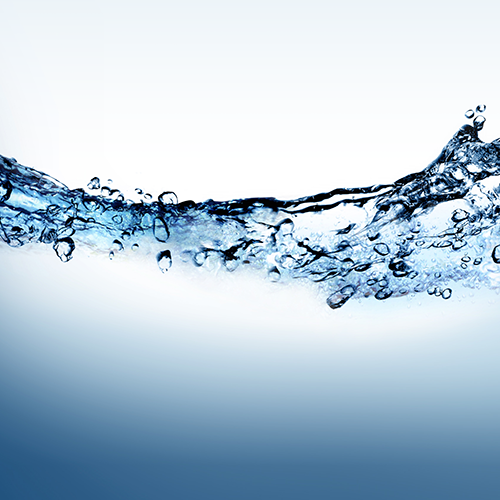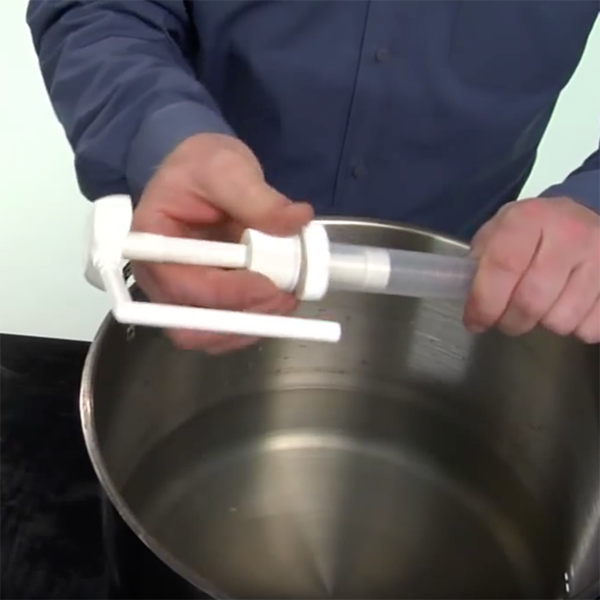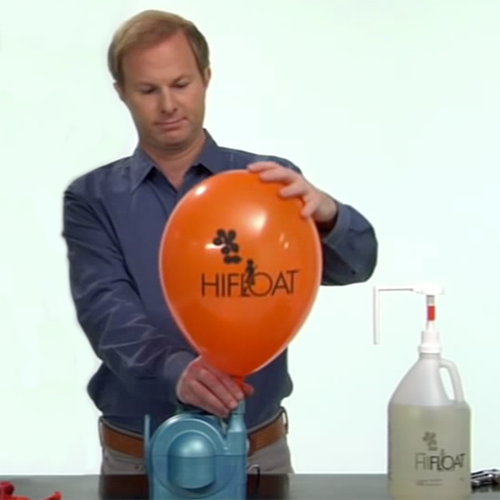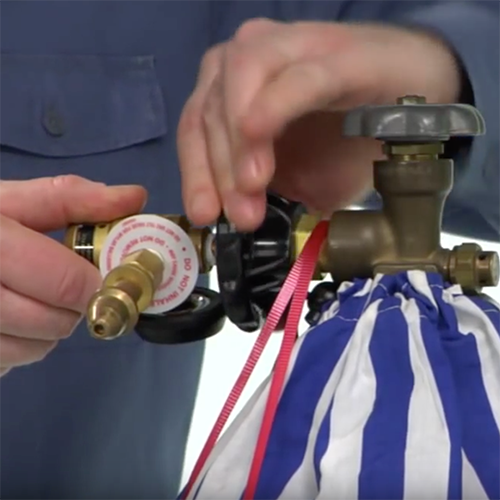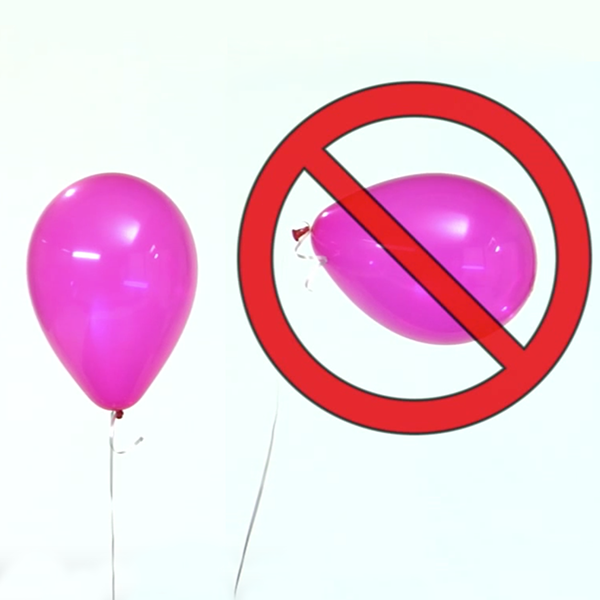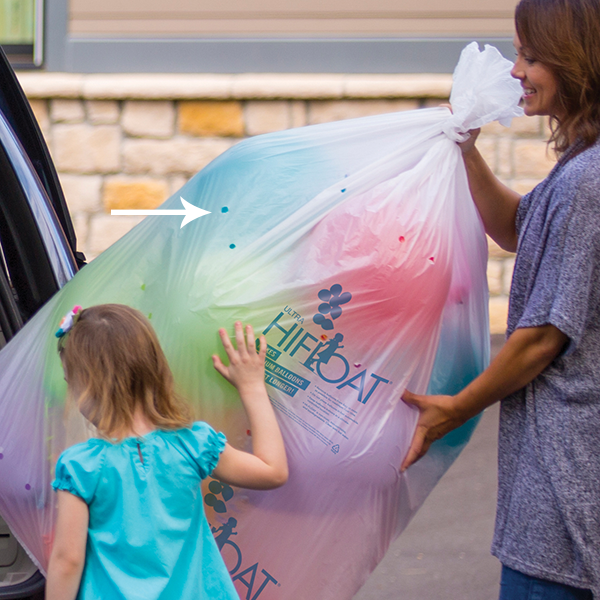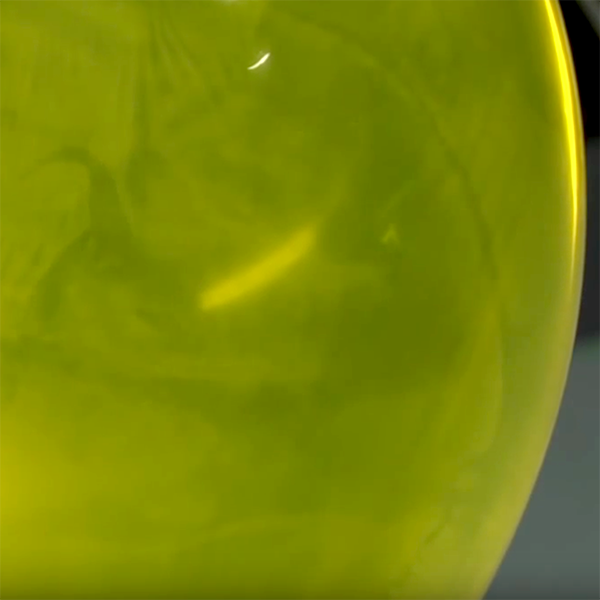Advanced Techniques
Coating the Outside of Air-Filled Balloons After Inflation
Coating the Outside of Air-Filled Balloons After Inflation A diluted ULTRA HI-FLOAT coating may be applied to the outside of the latex balloon after it is inflated to keep it from oxidizing (turning chalky). This is especially useful for clear balloons with items such as stuffed animals placed inside. Treating the outside of an air-filled…
Read MoreCleaning HI-FLOAT
Cleaning HI-FLOAT Allow adequate drying time for balloons in order to avoid cleanup jobs. We recommend allowing balloons to dry for a couple of hours before allowing them to be touched. HI-FLOAT is completely soluble in water, even after it has dried. It dissolves much more quickly in hot water. On nonporous surfaces such as…
Read MoreCleaning the Pump Dispenser
Cleaning the Pump Dispenser A pump dispenser should last through several bottles of HI-FLOAT. Check out our Pump Cleaning video on YouTube. If the pump becomes clogged and difficult to push down, pump warm water though it to clear the clog. If this does not work, the pump may be cleaned as follows: Unscrew the top of…
Read MoreTreating Air-filled Balloons
Treating Air-filled Balloons ULTRA HI-FLOAT is not just for use with helium. It can also be used to prolong the life of air-filled balloons. Check out our Air-Filled Balloons video on YouTube. HI-FLOAT prevents air from escaping through the walls of a latex balloon. It actually does an even better job of preventing air loss than it…
Read MoreHow to Save Helium With ULTRA HI-FLOAT
How to Save Helium With ULTRA HI-FLOAT 60/40 helium inflators are compatible with ULTRA HI-FLOAT treated balloons. 60/40 inflators add a helium/air mixture to the balloon and can provide balloons that will float for several days when treated with ULTRA HI-FLOAT. Because 40% less helium is used, the savings on helium more than pays. Check…
Read MoreBalloons Don’t Float When First Inflated
Balloons Don’t Float When First Inflated Treated balloons should float straight up when first inflated. If your balloon does not float straight up or leans to one side, then you either have too much HI-FLOAT in the balloon or not enough helium. If you’re using a 24-oz. or 96-oz. bottle of ULTRA HI-FLOAT, check to…
Read MoreBalloons Don’t Float for Very Long
Balloons Don’t Float for Very Long Add the full recommended amount of HI-FLOAT. The restriction clips that come with the pump dispenser ensure that the correct amount of HI-FLOAT is added to every balloon. Using less will shorten the balloons’ float time. Not adding the full recommended amount also makes it difficult to get an…
Read MoreThere Is Splatter Inside Balloons
There Is Splatter Inside Balloons When using HI-FLOAT in clear or transparent balloons, some uneven runs of liquid may be visible initially. These will gradually disappear as the coating dries. Splatter can be minimized in a number of ways. Try inflating the balloon more slowly, with the helium nozzle pointed in a downward direction. Also,…
Read MoreThere is Haze on Inside of Balloon
There is haze on Inside of Balloon Shortly after inflating a balloon, you may notice a haze or cloudiness on the inside of the balloon. (Oxidation occurs on the outside of the balloon.) This may be caused by adding less than the full recommended amount of HI-FLOAT. Make sure you are using the correct colored…
Read MoreProduct Discolors in the Bottle (Mold)
Product Discolors in the Bottle (Mold) A dark-green mold can grow on the surface of a HI-FLOAT bottle that has been opened for several months. The mold is harmless and similar to mold that grows on bread. If mold growth occurs, scoop off and discard the discolored material. Use the remainder of the bottle as…
Read More
